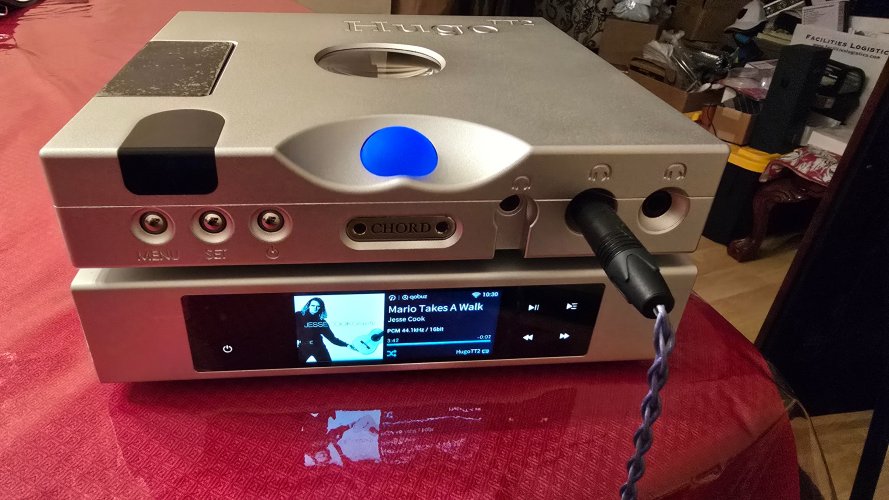I was thinking of maybe using the RCA outputs of the TT 2. However I think I had my figures wrong.
Apparently (at 8ohm I think) the RCA delivers about 7W. The balanced delivers 18W. Or at least in this video Rob says on SE it's 7W, and I am assuming that is RCA.
It could means I will have to rethink and use balanced if I bought the TT 2. I don't think 7W SE would be enough to drive my speakers. In fact overall I am not sure my speakers would be suited, because they are not sensitive. In the video Rob talks about using 90dB speakers.
However my current speakers are 86dB. I have looked over buying new speakers from 85 dB through to 89 dB. Right now though I can not possibly predict what I would do. (As much as I would like to rush out and buy some new speakers today.) It's about getting the right speakers for what I need that rules my decision. I use them on my desktop mostly, so speaker choice is extremely limited. Finding excellent quality speakers in a smallish package with enough bass is hard work. I can't be sure my speakers or any future speakers will remain on desktop though.
The down-side for me, is that I am not running 90dB speakers. The upside is that I need very little volume. Even when my speakers are running music, and I am not at my desk, it's not loud. ... Still not sure though if 18W (8 ohms) is going to be enough, on e.g. 85dB speakers.
I originally thought the TT2 did 22W on balanced, and 18W on RCA. However I remembered this wrong. Rob posted in post 340 about output power.
https://www.head-fi.org/threads/hug...-official-thread.879425/page-23#post-14251335
If I bought the TT 2 to use without an amplifier I am quite sure I would have to use balanced. I saw the post recently where someone linked some balanced to speaker female sockets, adaptors. They are going to affect sound quality though a little.
Having said that, I think Rob powers his B&W from the headphone port.






















